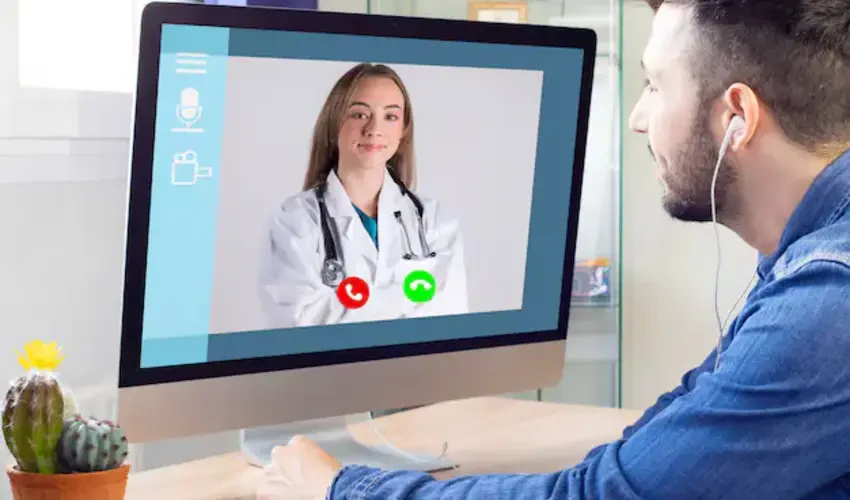Telemedicine is changing the way healthcare works. Patients can now get medical advice from home. Remote triaging is a key part of telemedicine. It helps doctors decide who needs urgent care. This system saves time and improves patient care. The future of remote triaging looks bright. Let’s explore how it is evolving.
What Is Remote Triaging?
Remote triaging is a process in healthcare. It helps decide the urgency of a patient’s condition. Doctors use technology to assess patients before they visit a hospital. It allows medical teams to prioritize cases.
Remote triaging uses phone calls, chatbots, and video consultations. Patients describe their symptoms. Doctors then decide the next steps. This method reduces hospital crowding and improves patient care.
Why Is Remote Triaging Important?
Remote triaging saves time for doctors and patients. It helps identify severe cases faster. Mild cases can be treated at home. This reduces pressure on hospitals.
During the COVID-19 pandemic, remote triaging became essential. It kept hospitals from being overwhelmed. It also reduced the risk of infection. Now, remote triaging is a permanent part of telemedicine.
How Remote Triaging Works in Telemedicine
The process of remote triaging follows simple steps:
- Patient Reports Symptoms – Patients enter symptoms in an app or speak to a nurse.
- AI or Doctor Reviews – A doctor or AI system assesses the case.
- Urgency Level is Set – The patient is categorized based on severity.
- Next Steps Suggested – The patient is advised to rest, visit a clinic, or go to the hospital.
This process ensures that critical cases get attention first. It also helps patients get the right care quickly.
Technology Behind Remote Triaging
Remote triaging relies on modern technology. Many tools make the process more accurate and efficient. Some of these include:
- Artificial Intelligence (AI): AI systems analyze symptoms and suggest possible conditions.
- Chatbots: Chatbots ask patients questions and provide basic medical advice.
- Wearable Devices: Smartwatches track heart rate, oxygen levels, and more. They send data to doctors.
- Electronic Health Records (EHR): Doctors can access patient history instantly. This helps with better diagnosis.
These tools improve the accuracy of remote triaging. They also make the process faster and more efficient.
Benefits of Remote Triaging
Remote triaging offers many benefits for patients and doctors.
For Patients:
- Saves time by skipping extra hospital trips.
- Cuts down waiting times for appointments.
- Offers fast medical advice from home.
- Reduces the chance of infection exposure.
For Doctors and Hospitals:
- Reduces the workload for emergency rooms.
- Improves resource management in hospitals.
- Helps prioritize serious cases faster.
- Lowers healthcare costs for hospitals.
These advantages make remote triaging a vital part of modern healthcare.
Challenges of Remote Triaging
Despite its benefits, remote triaging has challenges.
- Accuracy Issues: AI and chatbots may misdiagnose symptoms. Human doctors are still needed for final decisions.
- Technology Access: Not all patients have smartphones or internet access. This limits the reach of remote triaging.
- Privacy Concerns: Patient data must be kept secure. Cybersecurity is a big concern.
- Resistance to Change: Some patients prefer face-to-face consultations. They may not trust remote triaging.
These challenges need to be addressed for better adoption of remote triaging.
The Future of Remote Triaging
The future of remote triaging looks promising. Advances in technology will make it more accurate and efficient.
AI Will Play a Bigger Role
AI will improve symptom analysis. It will provide faster and more precise recommendations. Machine learning will help AI learn from real cases.
Wearable Devices Will Improve Monitoring
More people will use smart devices to track health data. Wearables will send live data to doctors. This will improve early detection of diseases.
Better Integration with Hospitals
Remote triaging will connect better with hospital systems. Doctors will get real-time patient updates. This will improve emergency response times.
Global Adoption Will Increase
More countries will adopt remote triaging. Rural and underserved areas will benefit the most. This will improve healthcare access worldwide.
Stronger Security Measures
New technologies will improve data security. This will ensure patient privacy is protected.
Conclusion
Remote triaging is the future of telemedicine. It saves time, improves efficiency, and helps patients get the right care. Though challenges exist, technology is making remote triaging better every day. AI, wearables, and better hospital integration will shape its future. The goal is to provide safe, fast, and accurate medical care. Remote triaging will continue to grow and improve healthcare for all.

